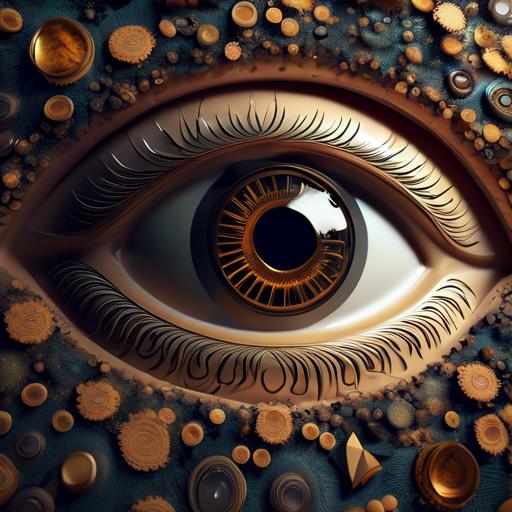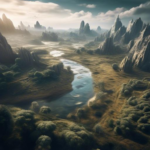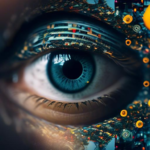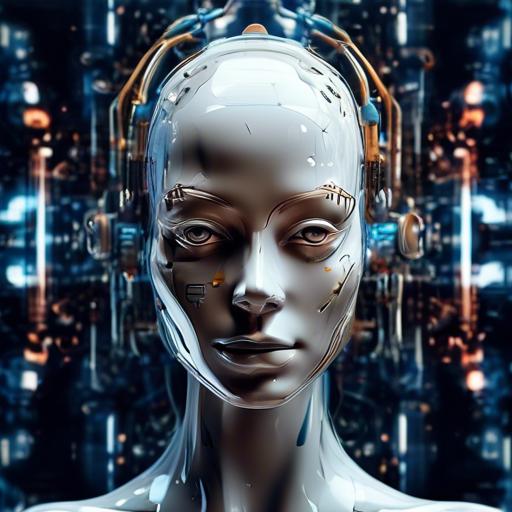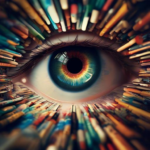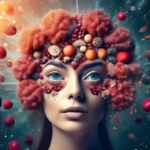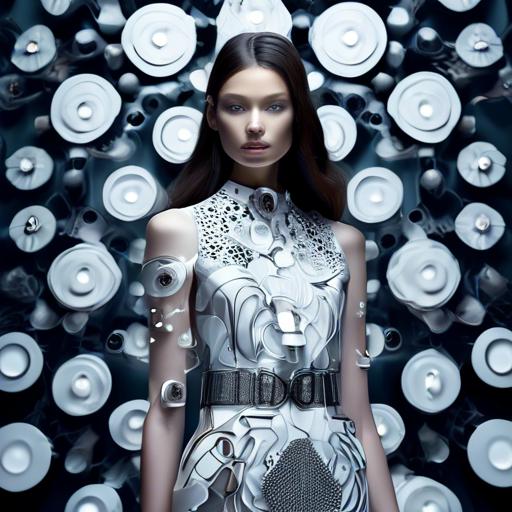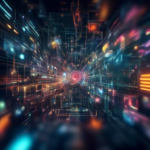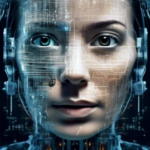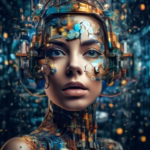Imagine a universe where your creative visions can seamlessly spring to life, no matter how wild or intricate they may be. Picture conjuring vivid landscapes, enigmatic surfaces, or fantastical creatures, and then watching them unfurl before your very eyes, bursting with detail and personality. This isn’t a scene plucked from the pages of a futuristic novel, nor an expensive venture reserved only for elite designers. Welcome to the exhilarating world of generating custom textures with AI—where technology and imagination dance in perfect harmony.
In this article, we’re about to embark on a journey that transforms abstract ideas into tangible textures using the power of artificial intelligence. Whether you’re a seasoned artist looking to enhance your digital toolkit or a curious beginner eager to experiment, we’ll guide you every step of the way. With supportive techniques, practical insights, and a sprinkle of creativity, get ready to embrace this groundbreaking tool that democratizes design and opens new frontiers for innovation. Let’s dive in and unlock the magic together.
Table of Contents
- Understanding the Basics: What is AI Texture Generation
- Choosing the Right AI Tools for Your Texture Needs
- Preparing Your Input: Tips for High-Quality Source Material
- Fine-Tuning Parameters for Unique Texture Outputs
- Enhancing Realism: Techniques for Seamless Integration
- Balancing Creativity and Functionality in Texture Designs
- Troubleshooting Common Issues in AI-Generated Textures
- Ethical Considerations in AI-Based Creative Work
- In Conclusion
Understanding the Basics: What is AI Texture Generation
At its core, AI texture generation leverages advanced algorithms and machine learning to create complex, high-quality textures that mimic real-world materials. These textures, essential for game development, CGI, and design work, can range from the graininess of a wooden plank to the intricate details of a dragon’s scales.
Understanding how AI achieves this begins with the technology behind it. **Generative Adversarial Networks (GANs)** are commonly used. GANs consist of two neural networks, the generator and the discriminator. The generator creates textures, while the discriminator assesses them. Through continuous feedback loops, the textures become increasingly realistic.
- Efficient and Time-saving: Traditional texture creation can be labor-intensive and time-consuming. AI does this swiftly.
- Consistency in Quality: AI maintains a level of consistency that is difficult for human artists to achieve over large projects.
- Innovative Designs: AI can generate patterns and textures that a human designer might never conceive.
Another significant advantage is customization. AI texture generation tools allow designers to adjust parameters, influencing factors like color, depth, and pattern complexity. By tweaking these inputs, one can create unique textures that align precisely with a project’s needs.
| Parameter | Description |
|---|---|
| Color | Adjusts the palette and shades used in the texture. |
| Depth | Controls the illusion of three-dimensionality in the texture. |
| Pattern Complexity | Determines how intricate or simple the texture design is. |
These tweaks, when applied thoughtfully, can result in a myriad of personalized textures that enhance the visual appeal and immersion of any project. Indeed, AI texture generation is not just about replication; it’s a tool for expanding creative horizons.
Choosing the Right AI Tools for Your Texture Needs
Finding the perfect AI tools to craft your ideal textures can feel like navigating a maze. Start by identifying what you need from an AI tool. Are you looking for **real-time rendering**? Or maybe **batch processing** is a more critical feature for your workflow. Knowing your primary requirements will streamline your search and ensure you select a tool that aligns with your needs.
Consider exploring different types of AI-driven tools available for texture generation. Here are some key categories to look into:
- GAN-based Tools: Generative Adversarial Networks (GANs) are adept at creating high-quality, photorealistic textures. Perfect for those who need lifelike materials.
- Style Transfer Tools: These use neural networks to apply a particular texture or style to an image, great for artistic and stylistic projects.
- Procedural Generation Tools: If you need infinite variations and extreme customization, procedural generation AI offers flexibility in creating unique textures.
Evaluate the **usability** of each tool. Some may offer comprehensive tutorials and a supportive community, while others might be more esoteric, requiring a steep learning curve. Take note of tools that provide excellent user interfaces, as these often make your work much more efficient.
Also important is the tool’s integration with your existing software. Compatibility can save you hours of frustration. The table below outlines some popular AI tools and their compatibility with common graphic design software:
| AI Tool | Compatible Software | Features |
|---|---|---|
| Runway ML | Photoshop, Blender | Real-time rendering, easy interface |
| Artbreeder | Standalone, Browser-based | High-quality, photorealistic textures |
| Deep Dream Generator | Photoshop, GIMP | Artistic style transfer |
consider the **cost** of the AI tool. Free tools and trial versions can be very generous, but paid versions may offer enhanced features and better customer support. Compare the price against the benefits to ensure you get the most value for your investment.
Preparing Your Input: Tips for High-Quality Source Material
In the realm of AI-generated textures, the quality of your source material can significantly impact your final output. To achieve mesmerizing and detailed textures, consider the following tips to optimize your input.
- High-Resolution Images: Starting with high-resolution images ensures that the AI has enough data to work with. Images with higher resolutions contain more details, providing the AI with richer material to analyze and replicate.
- Clear and Sharp Details: Ensure your images are clear and free from blurriness. Sharp details help the AI in distinguishing intricate patterns, leading to more accurate and appealing textures.
- Consistent Lighting: Consistent and well-balanced lighting in your source images helps maintain uniformity in the generated textures. Avoid strong shadows or overly bright highlights that can distort the AI’s interpretation.
It’s also beneficial to curate a diverse set of source materials. Mixing various textures, colors, and patterns can lead to more unique and creative outcomes. Here’s how you can diversify effectively:
| Texture Type | Characteristics |
|---|---|
| Natural Elements | Wood grain, foliage, water ripples |
| Fabric Patterns | Weaves, knits, and embroidery |
| Abstract Designs | Geometric shapes, gradients |
Another critical aspect is pre-processing your images. Simple adjustments like cropping, rotating to the correct orientation, and normalizing colors can go a long way in ensuring the AI understands the texture nuances better. Consider using basic image editing software or tools to make these adjustments before feeding them into the AI system.
don’t shy away from experimenting. Sometimes unconventional images or unexpected combinations can yield striking results. Play around with your source material, blend different types and see what extraordinary textures your AI can generate.
Fine-Tuning Parameters for Unique Texture Outputs
Fine-tuning parameters is the art and science of achieving truly one-of-a-kind textures using AI. This process involves adjusting various settings and input elements to hone in on the desired visual effect. Imagine it like tweaking the knobs on a music mixer to get that perfect harmony. Here, we’ll explore key parameters that can breathe life into your custom textures.
**Key Parameters to Adjust**:
- Model Complexity: Experiment with different AI models—they range from simple to highly intricate. Simpler models generate textures faster but might lack detail, while complex models can produce highly nuanced outputs at the cost of longer processing times.
- Input Data: The quality and variety of the data fed into the AI system significantly influence the outcome. Using a rich and diverse dataset can yield more interesting and unique textures.
- Color Palettes: Modifying the range and blend of colors can bring about a drastic change in the texture’s overall appearance. Go bold with vibrant hues or stick to a monochrome scheme for a minimalist look.
- Pattern Complexity: Introduce different levels of pattern intricacy. Simple, repeating patterns can create a calming effect, whereas more complex, less predictable patterns add dynamic visual interest.
- Layering Techniques: Implement multiple layers of textures that can be merged, overlaid, or blended. This technique adds depth and richness to the final output.
Each of these parameters plays a crucial role in determining the final texture. Balancing model complexity with computational resources ensures that you aren’t waiting for hours to see your masterpiece. Meanwhile, rich input data broadens the range of possibilities, providing a foundation upon which unique textures can be built.
Let’s break down how these parameters interact through a simple example:
| Parameter | Setting | Effect |
|---|---|---|
| Model Complexity | High | Detailed textures with intricate patterns |
| Input Data | Diverse | Broad range of texture possibilities |
| Color Palettes | Bold | Vibrant and eye-catching outputs |
| Pattern Complexity | Medium | Balanced visual interest |
| Layering Techniques | Multiple | Rich, multi-dimensional textures |
Feel free to experiment with these parameters to discover your own unique texture creations. The more you fine-tune, the more you’ll understand the interplay between different settings, leading to better and more innovative results. Like an artist mixing colors on a palette, each adjustment you make brings you closer to your perfect, bespoke design. So grab your virtual brush and start exploring the infinite canvas of AI-generated textures!
Enhancing Realism: Techniques for Seamless Integration
To take your custom textures to the next level, it’s essential to make use of AI-generated textures that blend seamlessly with your digital environments. **Understanding the right techniques** will ensure that the final product is both cohesive and visually stunning.
- Color Matching and Adjustments: When integrating AI-generated textures, pay attention to color schemes. Use color grading tools to match the hues and saturations of the textures with existing elements in your project.
- Layer Blending: Utilize blending modes such as multiply, overlay, or soft light in your editing software. This technique helps to naturally integrate textures, as it allows the underlying layers to influence the final appearance.
- Detail Enhancement: Use sharpening filters and fine-tune texture details to add depth and realism. This is particularly effective in high-resolution applications where every detail counts.
Proper application of these techniques can significantly impact the perceived realism of the textures. Take advantage of **layer masks** to precisely control which areas of your textures are revealed or hidden.
| Technique | Benefit | Recommended Tools |
|---|---|---|
| Color Matching | Seamless Integration | Adobe Photoshop, GIMP |
| Layer Blending | Natural Look | Blender, After Effects |
| Detail Enhancement | Added Realism | Topaz Studio, Sharpen AI |
Another powerful tool at your disposal is the **use of displacement maps**. These maps help simulate the intricate details of a texture in 3D, giving it a truly lifelike appearance. By using displacement maps, you can achieve the illusion of depth and complexity on flat surfaces.
To wrap up, never underestimate the power of **feedback loops**. Regularly review and iterate your textures by incorporating feedback from peers or user testing. This iterative process ensures continual improvement and a final product that resonates with your audience.
Balancing Creativity and Functionality in Texture Designs
Generating custom textures with AI can be a thrilling journey, but striking the perfect balance between creativity and functionality is crucial for achieving the desired results. To navigate this delicate dance, it’s important to understand both the artistic and practical aspects of your texture designs. Here’s how to master this balance adeptly:
**Embrace Artistic Freedom:** While AI offers incredible flexibility, getting the most out of it means allowing your imagination to flow freely. Don’t hesitate to experiment with unconventional patterns, color schemes, or textures inspired by nature. You can develop unique and captivating designs that catch the eye and evoke emotion. Think vibrant, abstract designs for a video game’s fantasy world or soft, intricate patterns for a digital painting.
- Leverage AI Algorithms: Use AI’s deep learning capabilities to generate an array of textures from simple inputs.
- Exploration Tools: Utilize exploration tools that allow variations in texture to discover unexpected and astonishing designs.
- Artistic Filters: Apply artistic filters and modifications post-generation to refine and personalize the output further.
**Ensure Functional Usability:** Artistic textures must also serve the functional needs of your project. Here, clarity and usability become paramount. In game design, for instance, textures need to load quickly and not distract or confuse the player. In web design, textures must enhance the user experience without overwhelming content readability or accessibility.
| Creativity | Functionality |
|---|---|
| Artistic Filter Application | Optimized Load Times |
| Color Scheme Experiments | User Experience Enhancement |
| Unconventional Patterns | Clarity and Readability |
**Iterate and Evolve:** Striking the perfect balance is often a process of trial and error. Use AI to generate multiple iterations of textures, evaluating each one’s artistic value against its functional effectiveness. Don’t be afraid to discard what doesn’t work and build upon what does.
Troubleshooting Common Issues in AI-Generated Textures
When working with AI to generate custom textures, it’s not uncommon to encounter a few obstacles. Here are some typical issues and ways to address them effectively:
**Inconsistent Quality**
Sometimes, the quality of AI-generated textures can be inconsistent. To mitigate this problem, ensure that your input datasets are varied and high-resolution. Avoid low-quality images as they will lead to flawed outputs. Additionally, fine-tuning the AI model with specific parameters that suit your project requirements can improve consistency.
- **Use high-resolution images for training data**
- **Adjust model parameters to suit specific needs**
- **Regularly update datasets with fresh visuals**
**Color Mismatch**
Color inconsistencies can be particularly jarring. Make sure the AI’s training data has a balanced color palette that reflects the desired outcomes. Utilize post-processing tools to adjust colors and ensure uniformity across textures. Automated color correction plugins can also be helpful for this task.
| Solution | Description |
|---|---|
| Color Correction Plugins | Automates the process of color matching and correction |
| Balanced Color Palette | Ensures training data has a uniform color scheme |
**Repetitive Patterns**
Repetition can make AI-generated textures look artificial. To counteract this, increase the complexity and diversity of the training dataset. Incorporating non-repetitive patterns and adding random noise can also be effective in breaking up monotony.
- **Diversify training datasets**
- **Include non-repetitive elements**
- **Add random noise to create natural variance**
**Slow Generation Speed**
If the AI is taking too long to generate textures, consider optimizing your hardware or using a more efficient model architecture. Cloud-based solutions with scalable resources can offer significant speed improvements, as can using GPU acceleration instead of relying solely on CPUs.
| Method | Benefit |
|---|---|
| GPU Acceleration | Speeds up texture generation significantly |
| Cloud-based Solutions | Provides scalable resources for faster processing |
Ethical Considerations in AI-Based Creative Work
When harnessing the power of AI to generate custom textures, it’s crucial to consider the ethical implications. **AI technology** doesn’t create in a vacuum; it learns from existing data, which means it may carry forward biases or unintentional plagiarism. To ensure responsible usage, consider the following points:
- Data Sources: Verify that the datasets used to train the AI are ethically sourced. Avoid datasets that include copyrighted materials, or ensure you have the rights to use them.
- Transparency: Be open about the use of AI in your creative work. Whether in product descriptions or portfolio pieces, acknowledging the role of AI promotes honesty and builds trust with your audience.
- Bias and Fairness: AI models can reproduce biases present in their training data. Regularly audit and refine your algorithms to minimize these biases and ensure fair representation.
| Consideration | Impact |
|---|---|
| Data Sources | Affects originality and potential infringement risks |
| Transparency | Builds trust and maintains creative integrity |
| Bias and Fairness | Ensures diverse and ethical output |
Moreover, the **environmental impact** of AI cannot be overlooked. Training large models consumes significant energy, and as creators, we must weigh the benefits of AI-generated textures against their carbon footprint. Opt for *efficient models* and explore *sustainable practices* that can mitigate this impact.
Lastly, consider the **implications for human artists**. While AI can generate textures quickly and efficiently, it should augment, not replace, human creativity. Promote collaboration between AI tools and artists to enhance human creativity rather than diminishing it. By addressing these ethical considerations, we can ensure a future where AI amplifies the creative process while respecting the values and principles of the art community.
In Conclusion
the possibilities are truly endless when it comes to generating custom textures with AI. By harnessing the power of artificial intelligence, you can unlock a whole new realm of creativity and innovation. So go ahead, experiment, play around, and push the boundaries of what is possible. Embrace the unknown and let your imagination run wild. The future of texture design is in your hands – so what are you waiting for? Dive in and start creating amazing textures like never before!

